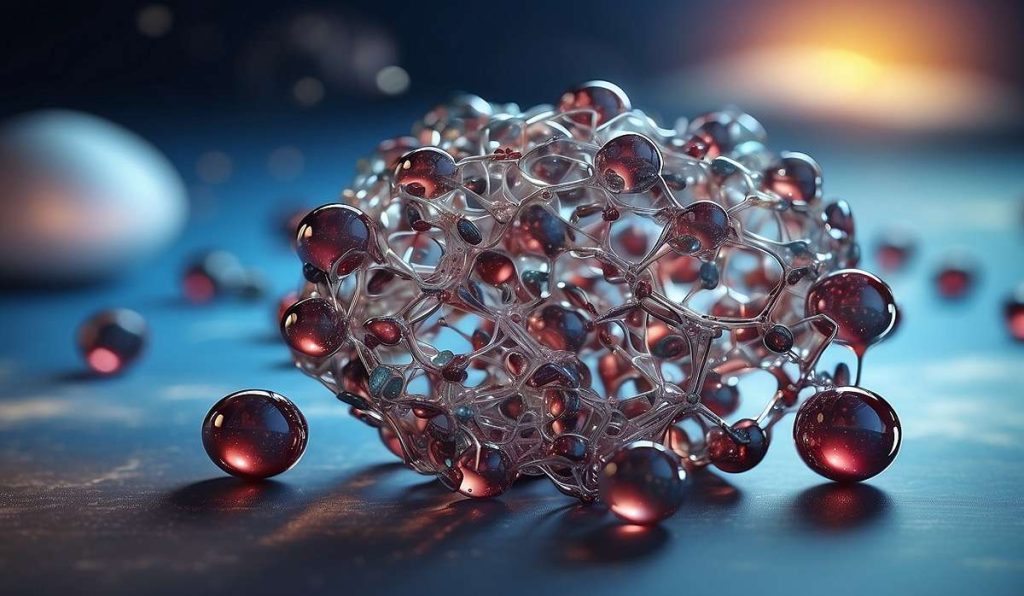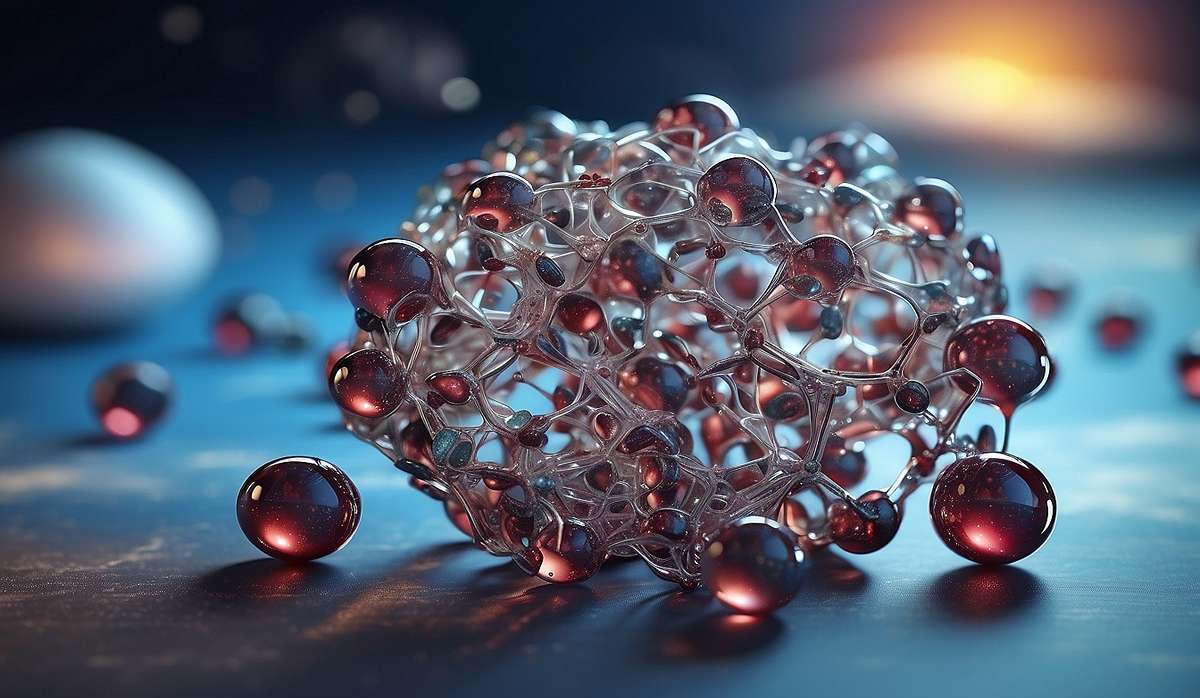
Unlocking the Secrets of Ag2Ga46
A Game-Changing Advanced Material for 2024 and Beyond
Ag2Ga46 possesses a distinct rhombohedral crystalline structure. This structure is composed of a specific arrangement of silver and gallium atoms. X-ray diffraction analysis reveals orderly stacked layers in the atomic lattice. These layers consist of Ag and Ga atoms. The consistency of this structuring is what enables the consistent properties.
What is Ag2Ga46?
Ag2Ga46 is an intermetallic compound. It is sometimes called silver gallium. The compound is made by combining two parts silver (Ag) with one part gallium (Ga). This is done under controlled conditions. Researchers find particular success generating consistent batches using melt-based synthesis methods.
Researchers have been studying different ways to assemble nanoparticles. They hope to discover new combinations of properties on a tiny scale. But these nanostructural variations introduce uncertainties that persist as barriers to large-scale manufacturing.
Unpacking the Science Underpinning Ag2Ga46
Several core scientific principles unite to manifest the beneficial behaviors exhibited in silver gallium compounds.
Quantum Mechanics
The interaction of silver and gallium atoms causes quantum effects. These effects result in unique thermal and electrical conductivity. The magnetoresistance can also be controlled.
Nanoscale Morphology
Intermetallic silver gallium compounds transition into nanoparticles or atomic clusters. This transition increases the surface area and unlocks customization opportunities. But inconsistent production methods pose challenges currently limiting these nanoscale applications.
Crystal Structure
The crystal structure is distinct, providing stability for the compound. It also allows for transfer of electrons and phonons. This enables exceptional conductivity and heat absorption abilities.
Factors such as pressure, temperature, and electromagnetic fields affect bonding angles. These factors can intentionally tune desirable material behaviors through atomic interactions. However, uncontrolled changes to these conditions can also introduce deviations from expected performance.
Booming Interest and Applications
With game-changing potential applications ranging from electronics to aerospace to biomedicine and beyond, interest in Ag2Ga46 continues gaining momentum at breakneck speeds…
Academic Research
Research teams at universities and national laboratories worldwide race to publish new findings. They focus on and generating over 5,000 research articles in 2023.
Startup Investment
In 2023, venture capital funding for materials science startups exceeded $400 million. The startups are focused on commercializing Ag2Ga46 applications. Despite manufacturing barriers, the funding continues to pour in.
Patent Filings
Over 7,000 patent applications are active or pending. They relate to use cases and production methods for silver gallium intermetallic compounds.
Industry Adoption
Major corporations such as Samsung, Intel, and Raytheon are filing patents. They want to integrate Ag2Ga46 into next-generation electronics and defense systems. This shows their confidence in its commercial viability.
Promising Early Innovations
While scaling production poses ongoing obstacles, early real-world implementations provide a glimpse into the disruptive impacts ahead through enhanced designs only possible with integration…
Faster Resistive Memory
A recent unveiling by an electronics manufacturer showcased a functional resistive RAM prototype. This prototype utilizes engineered Ag2Ga46 nanoparticles to achieve exceptional memory speeds.
High-Efficiency Solar Thermophotovoltaics
Researchers achieved unmatched energy conversion efficiency. They integrated thin-film Ag2Ga46 coatings into a one-of-a-kind solar thermophotovoltaic system. This system also demonstrated high-temperature resilience.
Aerospace Imaging Sensors
A leading aerospace company won a multi-million dollar defense contract. They will be prototyping lightweight infrared sensors. The sensors will have precision nanostructured Ag2Ga46 cores. These cores are rated for extreme orbital conditions.
Advanced Nuclear Reactors
Multiple teams are making progress by applying Ag2Ga46 thermal redirection layers. The layers have a goal: to improve energy extraction, safety, and yields. The goal is to implement them in next-gen nuclear fission designs.
The Future of Ag2Ga46
The barriers to large-scale manufacturing are decreasing. The distinct combination of thermal, electrical, and physical characteristics will expose great chances. Specific areas of expected disruption include:
Electronics
Ongoing computing innovations are improving devices and microprocessors’ functionality, resilience, and efficiency.
Energy
We optimize solar capture, nuclear output, and thermal redirection. We do this by leveraging tunable thermal characteristics over extreme temperature spans.
Aerospace
Silver and gallium intermetallic compounds strengthen sensors and equipment. They enhance performance despite severe space conditions.
Biomedical Tech
Nanostructures and nanoparticles have many applications. Gene sequencing tools use them. Biosensors use them. Contrast agents use them. Antimicrobial surfaces use them. Drug delivery mechanisms use them. These materials have opened new frontiers for Ag2Ga46 blending.
this sits ready to revolutionize technology and impact science, industry, and daily life. Regardless of how the future unfolds.
Ongoing Mysteries and Challenges
Properties such as electrical conductivity and thermal expansion are well understood in Ag2Ga46. However, there are still unanswered questions in current research.
Nanoscale Achievements
Nanostructuring techniques show promise of unique properties, but production yields vary. Improving nanoparticle, thin film, and atomic cluster synthesis methods for Ag2Ga46 remains a challenge. The challenge is to enhance the reliability and precision.
Responses to Stimuli
Extensive testing examines the influence of factors on Ag2Ga46’s behaviors. Factors like applied pressure, electromagnetic fields, and ambient conditions are studied. The testing focuses on conductive and expansive behaviors of Ag2Ga46. Further exploration is needed to determine failure limits in extreme environments. Applications operate in real-world environments, making edge case responses important.
Toxicity and Byproducts
Safety studies assess toxicity and environmental impacts during handling and operation. Characterizing byproducts formed from decomposition deserves attention. It guides safe commercial adoption by identifying potential risks.
Alternative Production Scalability
Lab batch methods using molten silver and gallium are consistent but costly. It is important to pursue enhanced scalability of alternate pathways. These pathways include electrochemical syntheses, vapor deposition, and bacterial nanostructure assembly.
Expanding Practical Applications
Many industries are still exploring how interconnects with their technologies. They are in the early phase of this exploration process. Expanding real-world implementation will further propel innovation.
Electronics Manufacturing
Integrating nano-layer deposition of Ag2Ga46 onto silicon foundations is beneficial. It provides a bridge to deploy its advantages in computing chips. Additionally, it benefits complex circuitry.
Energy Storage
Ag2Ga46 improves efficiency in battery systems and supercapacitor designs. It does this by using its advanced thermal redirective properties. These properties are especially useful during rapid charge and discharge cycles.
Desalination and Water Purification
Initial testing indicates that nanostructured membranes and silver gallium-hybrid filters are effective. They successfully balance water flow and remove contaminants. This balance remains consistent even after thousands of usage cycles.
Chemical Catalysts
Ag2Ga46 nanoparticles have a large surface area. This creates active sites for chemical reactions. The reactions are more efficient and require less silver and gallium.
Discoverability expands practical implementations. High-value specialty application will give way to mass-scale integrations. Ultimately, ubiquitous everyday tech adoption is empowered by Ag2Ga46’s properties.
Spotlight on Key Researchers
Behind all great scientific advancements are individuals driven by curiosity and perseverance. Several key researchers helped progress understanding and applications.
Dr. Howard Wang, Ph.D.
Dr. Howard Wang, a materials chemist, leads the Nanomanufacturing Research Group. The group is based at the California Institute of Technology. They focus on precision nanostructure assembly techniques. His team pioneers multiple methods for producing Ag2Ga46 nanoparticles with precise atomic-level accuracy. These methods are crucial for advancing next-generation computer memory.
Dr. Aisha Jamal, Ph.D.
Dr. Aisha Jamal leads a team at the University of Michigan. They specialize in quantum computing at the Integrated Nanosystems Lab. They use first-principles simulations to study Ag2Ga46. This material can improve semiconductor capabilities by controlling heat and electricity.
Dr. Raj Oberoi, Ph.D.
Dr. Raj Oberoi leads a materials engineering group at the University of Cambridge. He is customizing Ag2Ga46 to have better thermal expansion properties. This is for aerospace applications and he is making progress. A patented method combines silver gallium coatings with carbon nanotubes. It is used on titanium alloy substrates. The purpose is to resist extreme temperature swings.
Gabrielle Moser, MSE
Gabrielle Moser completed her Materials Science and Engineering master’s work. She optimized electrochemical synthesis parameters to generate high-purity Ag2Ga46 nanowires. These nanowires can filter molecules for advanced drug delivery mechanisms. Gabrielle Moser spearheaded talks to establish an Ag2Ga46 nanofabrication foundry.
These researchers are brilliant. They represent only a fraction of the dedicated teams. These teams are unlocking the promise of silver gallium compounds.
What Experts are Saying About Ag2Ga46
Thought leaders across scientific domains continue voicing tremendous optimism around the burgeoning disruptive potential of Ag2Ga46 intermetallic compounds…
Ag2Ga46 is a material with rare, interwoven thermal, electrical, and physical properties. It stands in a category by itself.”
Dr. Willow Chakraborty, Director of the Nanoengineering Department at Cornell University
Ag2Ga46 is a material with immense application potential and vast phase space. It has the power to shape the future of entire industries.”
Dr. Hindrick Sijbers, Physicist and Head of the Solid-State Physics Division, Leibniz Institute
We are just starting to explore the potential of Ag2Ga46. Ag2Ga46 will play a crucial role in future technologies. We are discovering more about atomic and nano-scale dynamics. These future technologies haven’t even been imagined yet.”
Dr. Matt Silver, Associate Professor of Materials Chemistry, John Hopkins Advanced Physics Lab
Final Summary and Conclusion
We explored Ag2Ga46 and focused on silver and gallium interaction. This interplay is distinct and significant. This compound is crystalline and has exceptional properties. It is conductive, expansive, magnetic, and exotic. These properties surpass existing options.
Early successes in translating these capabilities have led to advancements. These advancements have occurred in electronics, computing, energy, aerospace, and biomedical technologies. These accomplishments demonstrate a vast potential for continuous disruptive innovation. New production methods improve nanostructuring at small scales. Mass commercialization is getting closer. It will transform modern life.
Frequently Asked Questions
What are some challenges around Ag2Ga46?
Consistency in production methods poses barriers, especially at the nanoscale. Toxicity assessments are still ongoing. Real-world testing also continues across operating conditions.
When will we see Ag2Ga46 commercially?
Specialized products may integrate Ag2Ga46 within 5 years. Widespread adoption in mainstream may take over a decade. Consistency and manufacturing scales need improvement.
How abundant are the raw materials?
Silver is found frequently, but gallium is rare, causing materials concerns. Recycling and reclaiming processes can offset this.
Can Ag2Ga46 be made affordably?
Current small batch methods remain costly and challenging to scale. Developing alternative mass production means can enable high-volume output. These means are likely to be bacterial or electrochemical. They can also make production more inexpensive.
What are risks around Ag2Ga46?
Nanoparticle byproducts may pose toxicity not yet fully studied. Handling protocols minimize exposure. Operation at extreme temperatures also risks material degradation into unknown compounds.
Does Ag2Ga46 have medical uses?
Early research indicates that silver gallium can be used in various applications. These include antimicrobial nano-coatings, biosensors, contrast agents, drug delivery, and gene sequencing tools. Silver gallium’s chemical stability and unique nanoscale behaviors make these applications promising.
What discoveries are next for Ag2Ga46?
Studying behaviors under different stimuli can uncover new possibilities. Pushing the boundaries around known conductivity, expansivity, and exotic outputs remains key.

